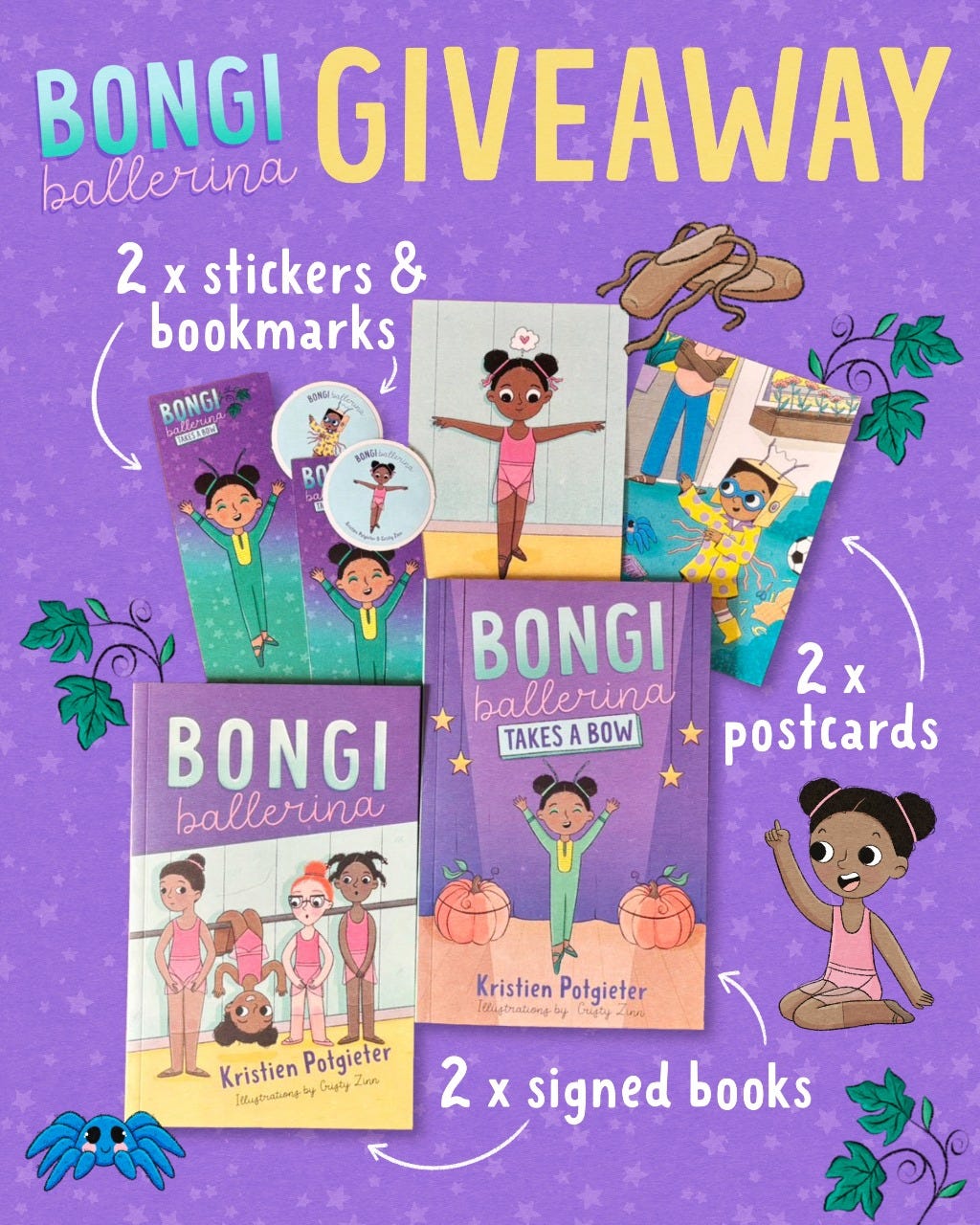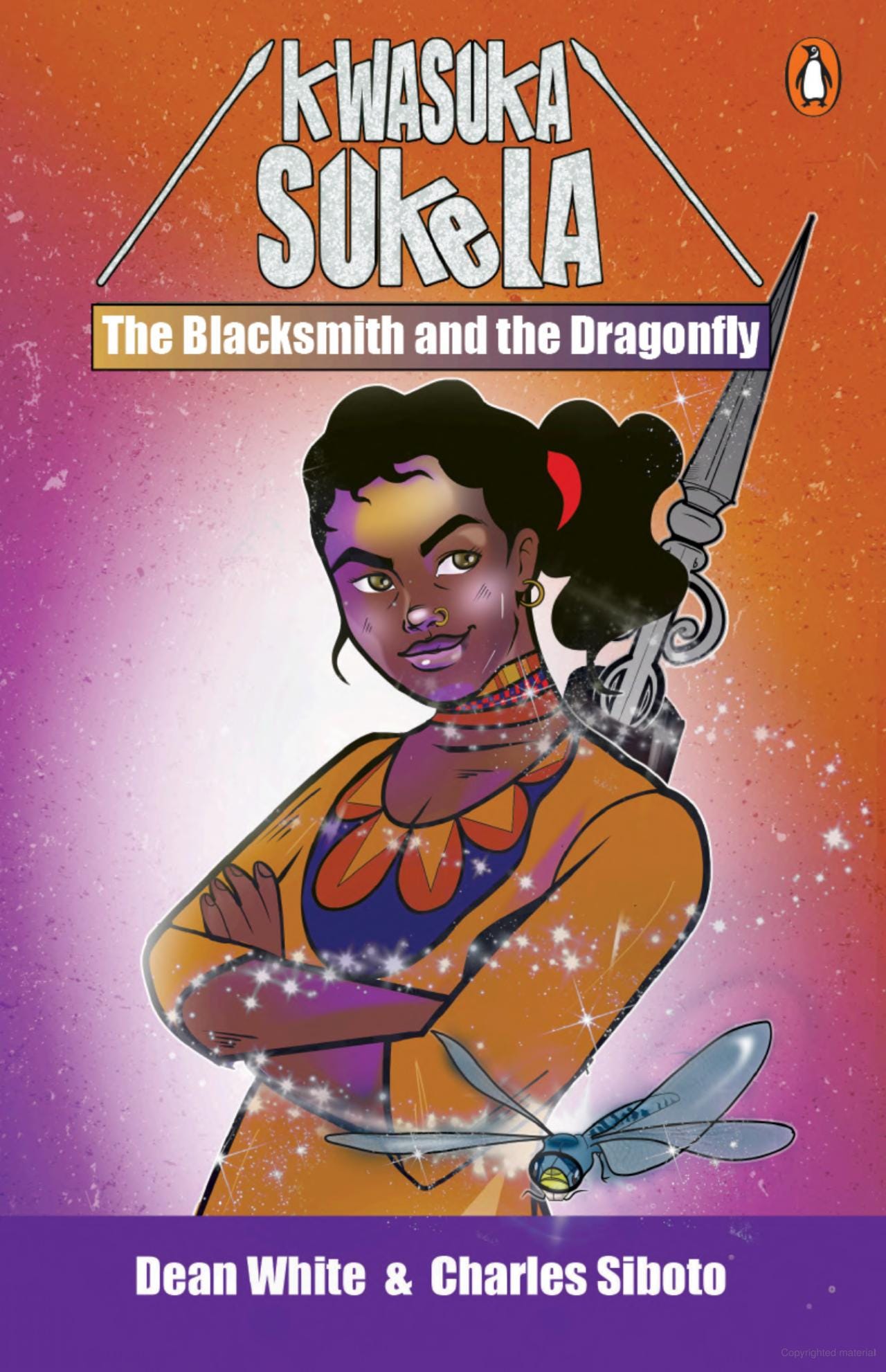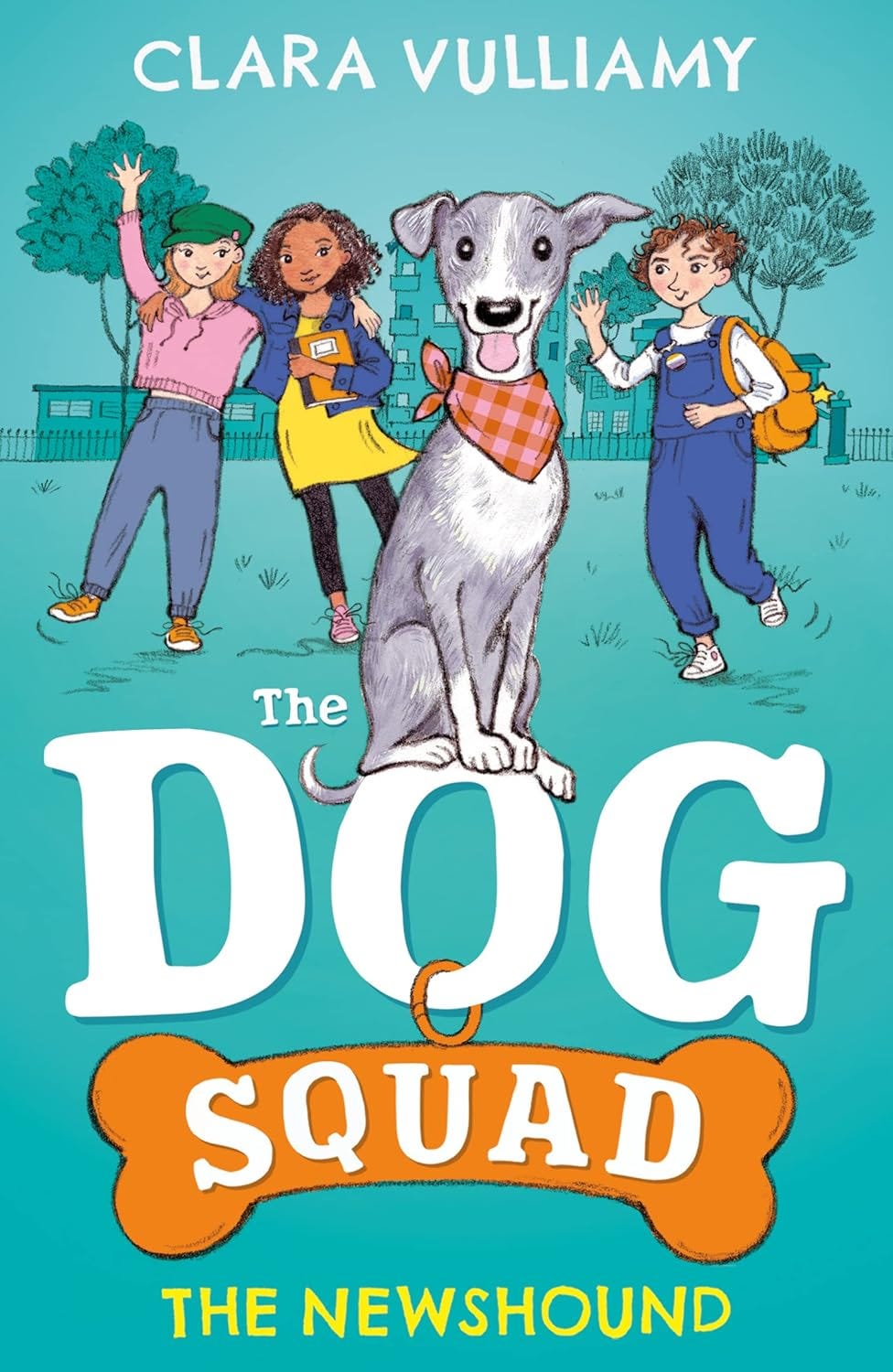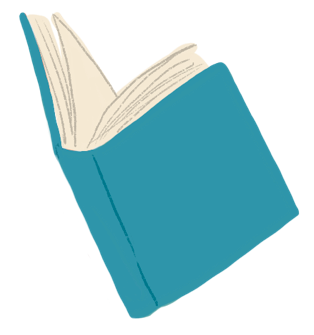The Story Explorers Club | July 2025
GIVEAWAY ALERT: Enter by 11 July to win a Bongi Ballerina book hamper!
Highlights from this month’s edition:
- Giveaway alert: Win a Bongi Ballerina hamper – entries close on Friday, 11 July
- Adventures and activities: Story Explorer-themed phone wallpapers to download
- Author spotlight: Charles Siboto
- Ask the author: A great reader question
Note: This newsletter is too long for some email apps, so make sure to click on “View entire message”, “Read in app” or “View in browser” not to miss anything.
Dear Story Explorer,
Thanks for joining me for another month of The Story Explorers Club. I have to say, it’s been another busy month, and, as happens every year around this time, I find myself in disbelief that half of the year is already over. It’s a little like how us South Africans seem totally bowled over and shocked by the cold every winter – as if it doesn’t come around like clockwork each year. Still, I’ll defend our annual right to be outraged by winter forever. Brrr! Seriously, why is it this cold!?
Scroll down to the News and updates section for details on an exciting Bongi Ballerina giveaway I’m running with the books’ illustrator, Cristy Zinn, on Instagram. Entries close next week Friday (11 July), and you can enter by going to my Instagram – and please tell any book-loving friends about the competition too.
This month’s Author spotlight is with local author Charles Siboto, who writes excellent stories for young people based on local myth, legend and fairytales. I loved hearing his perspective on his stories and why he writes for young people.
As usual, there are a few other bits and bobs included in the newsletter, and for this month’s Adventures and activities, I’ve created two Story Explorers Club phone wallpapers for you to download. I’ve been alternating between them on my phone and Katlego Keokgale’s gorgeous illustrations certainly brighten up my day every time I see them. I’ve also answered a reader question this month, so remember to submit your (or the young Story Explorer in your life’s) question, and I might answer it in a future edition of the newsletter.
It’s strange to think that this is already the sixth edition of the newsletter. I couldn’t have imagined beforehand how much fun I’d have putting it together each month, nor how kind and engaged people’s responses would be. Thank you all for being such brilliant readers and Story Explorers! Here’s to many more months of story exploring!
Stay kind and curious,
BONGI BALLERINA GIVEAWAY: Enter by 11 July to win!
Head on over to Instagram to enter the brilliant Bongi Ballerina book giveaway that I’m hosting along with the books’ illustrator, Cristy Zinn. You’ll need to follow me and Cristy, and leave a comment on the giveaway post tagging a book-loving friend. Entries close Friday, 11 July at 20:00 (SAST), and the winner will receive a signed copy of both Bongi Ballerina books, as well as two bookmarks, two postcards and two stickers!
Please note: Only one entry per person is permitted. The winner will be selected at random from all of the valid entries. The competition is open to residents of South Africa only. The competition is not sponsored or endorsed by Substack, Meta, Penguin Random House SA or LAPA Publishers. Entrants must be 18 years or older. If you win, you must be willing to share your contact details so the prize can be delivered to you. Entries close at 20:00 SAST on Friday, 11 July 2025.
Bongi Ballerina Takes a Bow is available to buy in stores at Exclusive Books, Wordsworth Books, Bargain Books, Readers Warehouse, PNA and most other South African bookstores, as well as online at (among others): Loot, Takealot, Exclusive Books, Wordsworth Books, The Book Box, Graffiti Books, Love Books and The Book Keeper Shop (follow these links to order).
Bongi Ballerina is available to buy in stores and online at various places, including here.
Remember, if your local bookshop doesn’t have copies of either Bongi Ballerina book, you can always ask them to order a copy for you at no extra charge.
Click on the links below to download these fun Story Explorers Club-themed phone wallpapers. I hope you enjoy them – they’ve certainly brightened up my phone.
“I hope readers come away feeling seen and inspired. I want them to know that their heritage holds deep magic and relevance.”
A little bit about Charles: Charles Siboto is a South African writer, editor and storyteller. He writes for children and young adults, drawing inspiration from African mythology, folklore and the everyday magic of South African life. He is the author of The Legend of Mamlambo and co-author of the Kwasuka Sukela series with Dean White. A former editor and publicist in the South African publishing industry, Charles is passionate about telling stories that reflect the diverse voices and imaginations of young readers. When he’s not writing, he’s probably reading fantasy and sci-fi novels, re-watching the same movies for the millionth time or exploring new playgrounds with his daughter.
KP: Thank you so much for chatting to me this month, Charles! Could you tell us a bit about your background as an author and your journey to becoming an author for young people?
CS: I grew up in the south of Jozi where I was surrounded by stories: family stories, street stories and the strange magic of folklore. I have always been drawn to the power of stories but it took me a while to believe I could write my own.
“I started writing for young people because I remember how books shaped me and I want to offer that same sense of wonder and recognition to other kids.”
It was only when I started working in publishing and saw how stories came together behind the scenes that I began to trust my own voice. I started writing for young people because I remember how books shaped me and I want to offer that same sense of wonder and recognition to other kids.
KP: I would love to hear more about your creative process. Do you do a lot of planning before jumping in with drafting? What time of day do you do your best writing? Do you have a favourite spot in which to write? Tell us everything!
CS: My process is a mix of planning and intuition. I usually start with a very loose outline and then let the characters lead the way. I do most of my writing in the mornings with strong coffee nearby. My best ideas tend to arrive when I’m out walking or at the gym, so I keep notes on my phone to capture them before they vanish.
KP: How do you stay motivated to write when life gets busy and other obligations get in the way? Are there any techniques you make use of when you are struggling to write, or when work, family or general life stuff make it hard to focus on creative projects?
CS: When life is hectic, I try to give myself grace. Some days are not for writing. But when I feel the spark dimming, I reread a passage from a book I love or return to music that inspires me. I also write in bursts. I learned a neat writing trick from Stephen King (we’re tight like that), where he recommends ending a writing session a few paragraphs before you run out of steam, so that when you come back the next time, you know exactly where you're heading next. It helps me trick myself into getting started. I also remind myself that even writing one good sentence counts as progress.
KP: Your book for teens, The Legend of Mamlambo, as well as the Kwasuka Sukela series co-written with Dean White, are heavily influenced by myth, legend and fairytale. Could you tell us a bit about the inspiration behind this? Are these myths and legends that you grew up reading or hearing?
CS: I have always been fascinated by myths and folklore, especially those passed down orally. My grandmother told me wild stories as a kid and that magic stayed with me. I wanted to write stories where our own legends were treated with the same awe and respect as Greek or Norse mythology. Mamlambo came from a conversation with my family about water spirits that lurk in forgotten places. Kwasuka Sukela allowed us to dive even deeper into a fantasy space rooted in African myth.
KP: How do you aim to make myths and legends relevant and relatable for contemporary young readers? The Legend of Mamlambo has a contemporary setting but the books in the Kwasuka Sukela series do not, so they also take different approaches. What do you hope young readers will take from these stories?
CS: I try to show that myths are not relics. They are living things. The Legend of Mamlambo is set in a present-day Jozi because I wanted to show that magic can exist in places we know. The Kwasuka Sukela stories are set in fictional kingdoms but they are driven by themes that still matter: identity, legacy, family and power. I hope readers come away feeling seen and inspired. I want them to know that their heritage holds deep magic and relevance.
“I want readers to feel that their way of speaking belongs in literature, too.”
KP: I love how in both The Legend of Mamlambo and the Kwasuka Sukela series, although the books are predominantly written in English, you mix in a bit of other languages as well. Could you talk a little bit about the decision behind this and what your intentions with it are?
CS: South Africans speak in a blend of languages every day. It is how we communicate. It felt natural to reflect that in the books. Using multiple languages also adds texture and rhythm to the storytelling. It gives a sense of place and character. I want readers to feel that their way of speaking belongs in literature, too.
KP: I found the Kwasuka Sukela series really innovative in the way that it combines the text and the illustration, sometimes making use of a comic book or graphic novel-like format. Could you tell us a little bit about the process behind this and how it shapes the storytelling?
CS: This was one of the most exciting parts of the collaboration with Dean and the design team. We wanted the visuals to do more than just decorate the text. We wanted them to tell parts of the story in their own way. The comic book elements were inspired by the idea that our audience is visually literate and used to reading across formats. It allows for dynamic pacing and gives readers different entry points into the narrative. It is especially great for reluctant readers or those who feel more confident when they can see the world.
KP: What are some books for young people that inspired you when you were younger, and what are some more recent books for young people that you loved and would recommend to readers?
CS: I adore The Witches by Roald Dahl. It was the first book that terrified and thrilled me as a kid. I love Christopher Pike’s Spooksville series! It serves as the main inspiration for my Spookfontein setting of The Legend of Mamlambo. I'm into Lauren Beukes’s books and can always recommend Zoo City to young readers. She also does comic books and her run on the Fairest series, The Hidden Kingdom, is great as a take on the Rapunzel fairy tale. Speaking of comics, Mohale Mashigo’s stuff is great! Especially her run on Marvel’s Black Panther: Sins of the King. Other than that, I’m a huge fan of fantasy and sci-fi in general and I blend all those elements into my writing.
KP: Can you share anything about any upcoming projects that you're working on?
CS: I am working on the next book in the Spookfontein series, which continues the adventures from The Legend of Mamlambo. Mamlambo has had her moment but many more shadows are lurking in Spookfontein.
KP: That sounds most intriguing… I can’t wait to read it!
The Legend of Mamlambo and the first two Kwasuka Sukela books, The Blacksmith and the Dragonfly and The Princess and the Sangoma, can be bought online and in all local bookstores.
Kiara (age 9, from Johannesburg) asked: Where did you get the idea to put Cinderella the ballet in the new Bongi Ballerina book?
Kristien’s answer: I love this question! In the first Bongi Ballerina book, Bongi and her friends go to watch Giselle at a theatre, so I knew I wanted the new book to feature a different ballet. I chose Cinderella partly because I have happy memories of dancing in a production of Cinderella myself, and it is such a fun and classic story for a ballet. When I looked at the different roles in different ballets, I was also drawn to Cinderella because I immediately knew that Bongi would LOVE to dance the role of a grasshopper – it’s a role right up her alley!
Do you or the young Story Explorer in your life have a question you’d like to ask Kristien about her books or about being an author?
Click on the link below to submit your question, and Kristien will answer one reader question per newsletter.
Books I’ve recently read and enjoyed
Chapter book (ages 7+): Dog Squad: The Newshound by Clara Vulliamy (2023, HarperCollins). I love this series by Clara Vulliamy (whose cat-focused Marshmallow Pie series is also adorable). In The Newshound, the first in the series, Eva and her best friends, Simone and Ash, start a newspaper called “The Newshound” after they find an adorable stray dog called Wafer. This is the perfect gentle mystery series for kids aged 7 and older, and features lovely non-binary representation as well. Vulliamy also illustrates her own books in an utterly charming way.
Middle grade (ages 9+): Nevermoor series by Jessica Townsend. Jessica Townsend’s brilliant Nevermoor series doesn’t really need much extra publicity, but I can’t help but recommend it this month, as the fourth book in the series, Silverborn: The Mystery of Morrigan Crow (2025, Orion) has just been released, and it is just as witty and fun as the others in the series. The first book in the series, Nevermoor: The Trials of Morrigan Crow (2017, Orion) is an absolutely wonderful book – I’ve re-read it multiple times, and I also just re-read the third book in the series, Hollowpox: The Hunt for Morrigan Crow (2020, Orion) in anticipation of Silverborn’s release. This is one of my absolute favourite fantasy series of the last decade – and I can especially recommend it if, like me, you’d rather not give that evil wizard lady any more of your time or money but still want a fun middle-grade fantasy kick! It is an incredibly charming and imaginative series, and I can’t get enough of Morrigan and her pals in Nevermoor.
A round-up of links and articles I’ve recently read, enjoyed or felt inspired by
My love of Sally Rooney’s work might make me a stereotypical millennial white woman, but I truly respect the Irish author for her unwavering moral clarity on Palestine. She declined to sell the translation rights to her last two books to Israeli publishers, confirming that this decision is in support of Palestinians “in their struggle for freedom, justice and equality.” She also recently wrote this article for The Guardian on the hypocrisy of the British government for calling the actions of a group like Palestine Action “terrorism” while staying silent on Israel’s ongoing genocide in Palestine and still providing Israel with arms.
Deepa Anappara, the brilliant and award-winning author of Djinn Patrol on the Purple Line (and my good friend), recently appeared on Collected: The Podcast (the Royal Literary Fund’s podcast), talking about a wide range of topics related to the writing life, research and the publishing industry. It’s an absolutely wonderful conversation. I highly recommend listening – several other episodes, such as the one with Kate Mosse, are also well worth a listen. (And keep an eye out for Deepa’s next, equally excellent novel, The Last of Earth, due to be released in 2026!) Collected: The Podcast is available on all major podcast platforms.
A thought-provoking article by Phil Melanson on LitHub on queer historical fiction as holding “the potential to create, preserve, and challenge”.
If you don’t already, I highly recommend giving South African fashion historian Khensani Mohlatlole a follow on Instagram. She also has a Substack, called Hanger Management, and her recent post entitled “I am, therefore I buy: stop consuming, start creating” is just wonderful, and echoes so many of my feelings over the last few years about how we’re all forced into being constant consumers, and why crafting and creating are a kind of antidote to this. “I believe craft functions as micro-resistance,” writes Mohlatlole. “There are too many content recreators… [We] need more creators.”
Yep, I am back on my regular soapbox. Just in case you needed another reminder why outsourcing your brain to a computer program is probably not the best idea: this article in Time reports on a recent MIT study that aimed to look at how using ChatGPT affects critical thinking. Participants were asked to write SAT essays, some with the assistance of ChatGPT, others using Google’s search engine and a third group with no assistance. The ChatGPT users consistently had the lowest brain engagement and, as the report notes, “Over the course of several months, ChatGPT users got lazier with each subsequent essay, often resorting to copy-and-paste by the end of the study.” Hmm, isn’t that interesting…?
A massive group of well-known American authors – including Adam Silvera, Veronica Roth, Rainbow Rowell, R.F. Kuang, Lauren Groff, Holly Black, Emily Henry and many others – recently wrote this open letter against AI to publishers, asking the publishing industry to protect authors and say no to using AI to replace artists and writers. They write: “We want our publishers to stand with us. To make a pledge that they will never release books that were created by machines.”
For more updates about my writing, follow me on Instagram: kristienauthor
Until next month – thank you for reading!
























